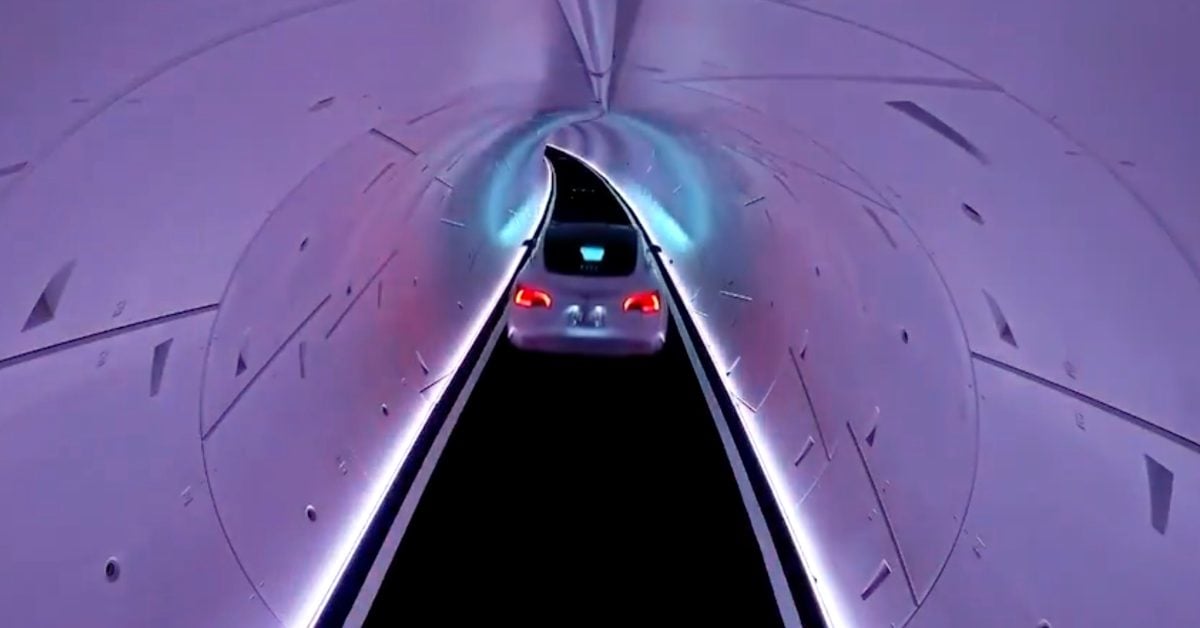Tesla uberbulls often like to say that Tesla is the leader in self-driving because while it doesn’t have a commercially available autonomous ride-hailing service like Waymo, it doesn’t rely on geo-fencing and mapping like Waymo.
They argue that if Tesla wanted to do that it could, but it prefers to focus on an autonomous system that could drive anywhere, anytime, without mapping.
However, it is questionable that they could do it if they wanted to because they still haven’t done it on a project much simpler than Waymo’s operations in Pheonix and other cities: the tunnels under Las Vegas.
The Las Vegas Convention Center Loop is The Boring Company’s first full-scale loop project currently in commercial use.
Elon Musk’s tunneling start-up completed the $50 million project in just over a year.
A Boring Company Loop system consists of tunnels in which Tesla electric vehicles travel at high speeds between stations to transport people within a city. The Boring Company said that it was working with Tesla to use its self-driving system inside those tunnels, which would enables to get rid of the current drivers and lower the cost of operation.
However, 2 years and several more tunnels connected to the Loop later, The Boring Company is still using drivers in the tunnels.



Part of the problem is to meet their quoted throughput of passengers they would need to fully load/unload each vehicle in ~30 seconds. 4 adults in, 4 out, with luggage, with no delays or struggling. That’s… not very feasible for a commercial passenger car. They’re not designed for quick loading and unloading.
The tunnels are a single lane without a service tunnel, which the Victorians used in the 1800s for their subways. Because if a single car has mechanical issues the entire service has to stop and empty to clear it. They’re electric, so there are less mechanical systems, but they are still putting a significant amount of wear and tear on tires/axels/steering systems, all the mechanical systems they still have. Even without meeting the their goal throughput, they’re putting orders of magnitude more use on each vehicle, which are consumer cars. They’re meant to spend most of their lives parked.
If they made a “Tesla train/trolly” where the engine car was pulling a simple enclosed cart with seats it would significantly improve their throughput and loading times, and require less maintenance per passenger. But at that point you’ve just invented a train that uses significantly less efficient rubber tires on asphalt.